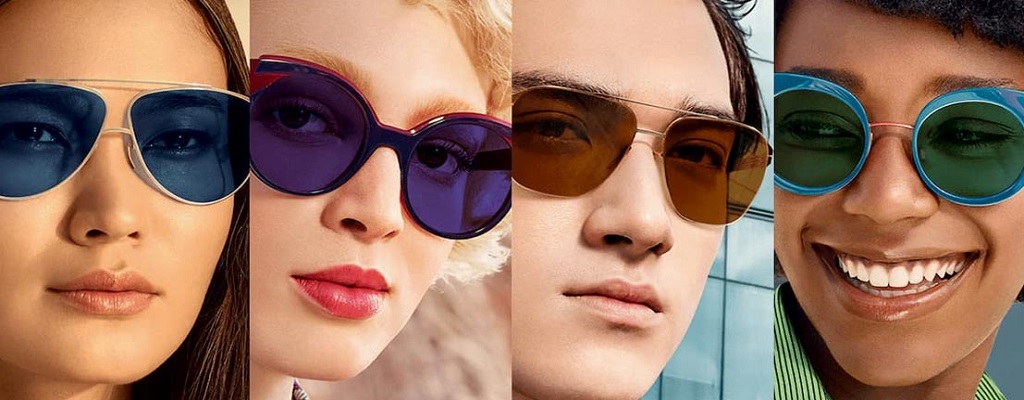Are Transition Lenses Right for You? Factors to Consider

Transition lenses darken automatically in response to UV and light conditions. This is made possible by trillions of photochromic molecules responding to UV rays to change the lens’s appearance. While these lenses offer numerous benefits, discussing their pros and cons with your eye care professional is essential.
UV Protection
If you wear clear lenses, you can protect your eyes from UV rays by wearing sunglasses or a clip-on sun visor on top of your glasses. However, many people forget or avoid wearing sunglasses when going out for the day or running errands. This can put your eye health at risk and contribute to developing conditions such as cataracts and macular degeneration. Transitions lenses, like the ones at Zenni Optical, automatically darken when exposed to UV rays. This means you don’t have to worry about forgetting or losing your sunglasses when out and about. They also come in a variety of tints to suit your style. They are available in various frame styles and prescription strengths and are compatible with all lens treatments, including anti-reflective coatings. You can find these lenses in both plastic and glass photochromic designs. The molecules that change color in the lenses are layered evenly across the surface, so your lenses will appear to have an even tint when darkening. Keep in mind that these lenses do not activate inside vehicles. They will only darken when exposed to UV rays from the sun.
Blue Light Protection
Adaptive transition lenses protect the eyes from harmful UV rays by adjusting their tint based on the amount of light that enters your eye. They also help to filter out harmful blue light that can affect pupillary constriction and cause eye strain, fatigue, and headaches. They also offer a slight tint indoors to help reduce glare from overhead fluorescent lighting. This is especially helpful for patients with migraines who find that certain lighting levels can trigger them. One of the most significant benefits of transitions is that they can eliminate the need for a separate pair of sunglasses. If you’re a fan of wearing sunglasses, it can be annoying to constantly have to fumble around for your glasses every time you go outside. Transitions offer a convenient solution by automatically darkening when you enter sunlight. While transition lenses provide an effective way to filter out UV rays, they could be better. The speed at which these lenses darken and precise depends on several factors, including the temperature, the type of lens, and the amount of UV intensity. In scorching temperatures, the lenses may not darken as much as desired and can expose your eyes to UV rays. This UV exposure can lead to eye damage, including cataracts and macular degeneration. For this reason, it’s essential to wear sunglasses in direct sun.
Convenience
In addition to convenience, transition lenses offer UV protection that you don’t get from regular glasses or sunglasses. Extended UV exposure is linked to the development of cataracts and macular degeneration. These lenses adjust automatically, shielding your eyes from sunlight and glare without you remembering to switch to sunglasses when you go outside. The lenses tint slowly as you walk outdoors, darkening enough to protect your eyes from UV rays while offering clear vision. Once you’re inside, the lenses will gradually fade back to their clear state. The time it takes for the lens to fade back depends on your temperature and the brand of transition lenses you choose. In warmer temperatures, the molecules in the lenses are more reactive and will change to a clear state faster than in more relaxed environments. Transition lenses can save you the cost of purchasing two eyeglasses and sunglasses. In the long run, they also save you the hassle of carrying around two different pairs of glasses as you move in and out of buildings throughout the day. Switching between glasses frequently increases the likelihood of one getting lost or damaged, which can be frustrating and costly. Transition lenses are available in various densities and colors to suit your style.
Aesthetics
Transition lenses are a popular choice for many patients because they offer the benefits of two different types of glasses in one. They darken when exposed to UV rays and clear again when indoors, eliminating the need for separate sunglasses and everyday frames. Patients can also choose between a range of tint levels and colors to find the look that suits them best. In addition, the tint on transition lenses can be noticeable if worn in light-colored frames. This can cause some patients to feel self-conscious about the way their lenses appear in specific frames. If you’re considering getting transition lenses, consult your eye care professional to determine whether this lens fits your needs.
